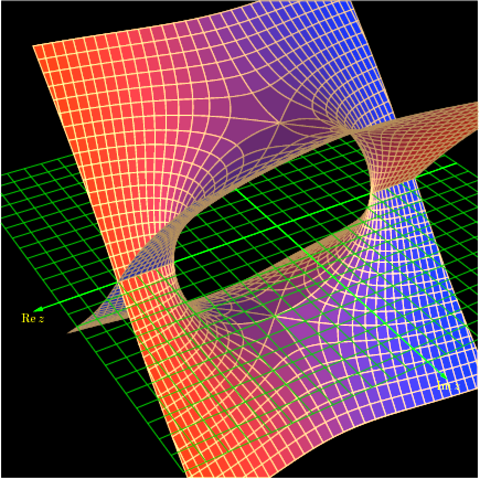Edit: Let me restate the main claim being made in these two papers,
Consider the "branched" Riemann surface which has "n" sheets stuck along the intervals, $[z_i, z_{i+1}]$ for $i=1,..,2N$ then it is of genus $(n-1)(N-1)$ and is represented by the equation, $y^n = \prod_{i=1...N} \frac{z-z_{2i-1} }{z-z_{2i}}$
If the same intervals are labelled as, $[u_i,v_i]$ and $i=1,..,N$ then this is represented by the curve, $y^n = \prod_{i=1}^{N-1}(z-u_k)(z-v_k)^{n-1}(z-u_N)$ and has genus $(n-1)(N-1)$
(..and $v_N$ has somehow been sent to infinity using conformal maps..)
I would like to understand why the above claims are true and their derivation and why these are the same things. (...to begin with I can't see how a "genus" can even be defined for such an object - it isn't something compact and orientable!..)
I can't see how I can use any of the standard Riemann surface theory (like in the books by Griffiths or Jurgen Jost) on this weird structure!
================================================================================== The two paper references where this concept is mentioned which I would like to understand,
http://arxiv.org/abs/1303.7221 (the branched Riemann surface that has been constructed at the top of page 6 and its algebraic curve and genus)
http://arxiv.org/abs/1209.2428 (the construction around equation 3.16 on page 16)
I guess both of them are constructing the same "branched Riemann surface" and writing down an algebraic curve for it and calculating its genus. I can't understand this construction and how the Riemann-Hurwitz formula is being used here.
If I go back to my usual references of the books by Jurgen Jost or Phillip Griffiths then I don't see anything there called "n sheeted branched Riemann surface with N cuts" and how one calculates it genus or its algebraic curve. (or am I missing something and hence not able to recognize the concept?)



